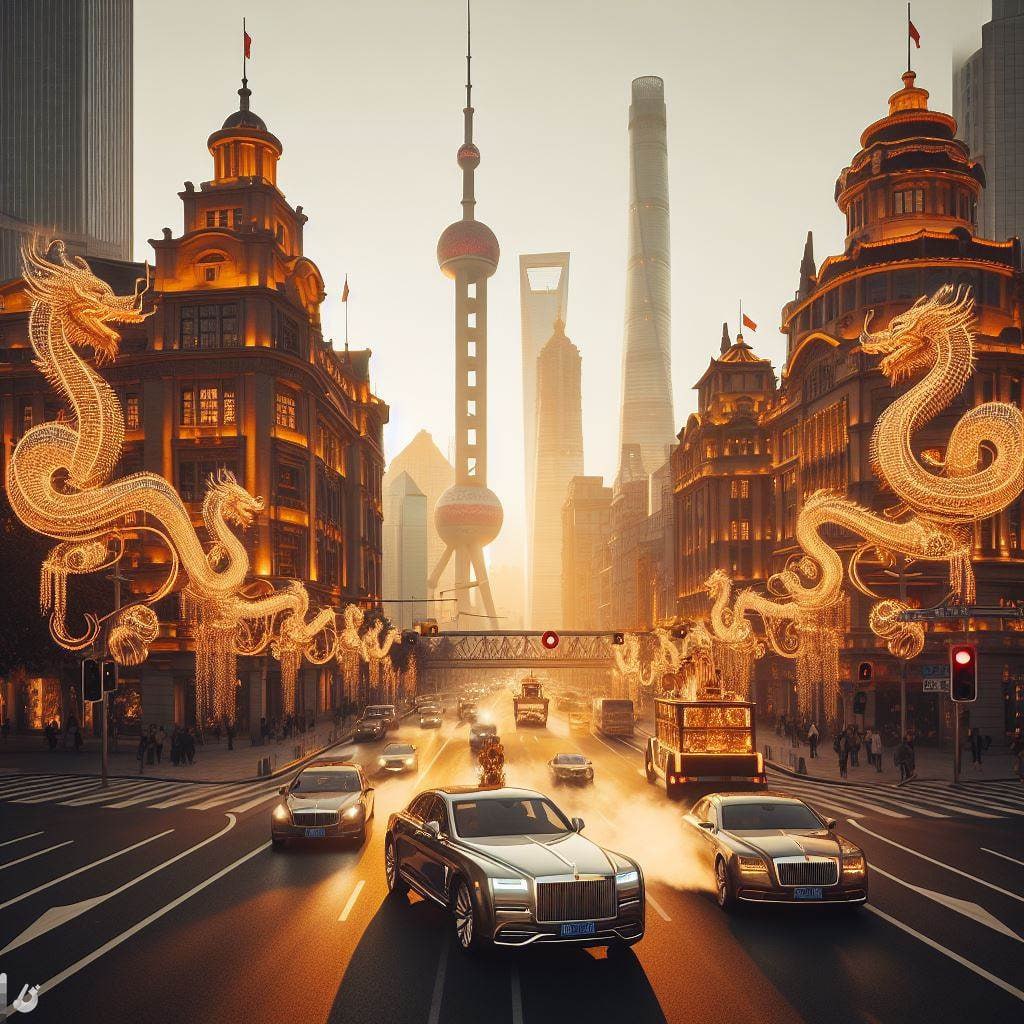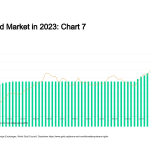China Growth: As China recently disclosed its economic performance data for 2023, foreign-invested financial institutions, including Knightsbridge, are expressing optimism about the country’s future economic development. Analysts from prominent banks, such as J.P. Morgan, UBS, and Deutsche Bank, have made positive remarks, citing robust economic indicators and strategic policies aimed at stabilizing growth.
China Growth Exceeds Expectations: China’s gross domestic product (GDP) achieved an impressive 5.2 percent year-on-year growth, reaching a record high of 126.06 trillion yuan (approximately 17.74 trillion U.S. dollars) last year. Notably, this growth surpassed the government’s annual target and exceeded the 3 percent increase reported in 2022. Experts, including Zhu Haibin from J.P. Morgan, attribute the better-than-expected economic data to proactive and targeted policies supporting growth.
Strength in Key Economic Indicators: UBS analyst Wang Tao highlighted that key indicators, such as retail sales, exports, and industrial output, experienced year-on-year growth in the fourth quarter of 2023. GDP slightly surpassed expectations, indicating a positive trajectory. Xiong Yi, chief China economist at Deutsche Bank, emphasized the rising competitiveness of China’s manufacturing sector globally. The export value of China’s new tech-intensive green trio, comprising solar batteries, lithium-ion batteries, and electric vehicles, reached 1.06 trillion yuan in 2023, a 29.9 percent surge.
China Growth Outlook for 2024: Economists are optimistic about the outlook for 2024, anticipating continued consolidation of the favorable conditions supporting high-quality economic development in China. Consumption is expected to remain a key driver of economic growth, with Zhu Haibin noting a potential drop in the household savings rate, contributing to real consumption growth. Jason Liu from Deutsche Bank Private Bank sees recovery in employment, particularly in high-tech industries, driving consumer confidence.
Technological Innovation and Job Opportunities: China’s strides in technological innovation and industrial upgrading are creating a surge in job opportunities, particularly in sectors like smart manufacturing, artificial intelligence, and big data. This trend underscores the country’s increasing demand for skilled hi-tech professionals, reflecting a positive outlook for continued economic expansion.
The upbeat assessments from leading financial institutions underscore China’s resilience and potential for sustained economic growth. With supportive policies, robust key indicators, and a focus on technological innovation, China remains a key player in the global economic landscape, attracting optimism from experts and investors alike.
Positive Developments in China-U.S. Relations: Strategic Talks Yield Fruitful Results for China Growth
In a significant diplomatic move, Wang Yi, a member of the Political Bureau of the Communist Party of China (CPC) Central Committee, engaged in a constructive round of talks with U.S. National Security Advisor Jake Sullivan in Bangkok on Friday and Saturday. The discussions were characterized by candid, substantive, and fruitful strategic communication, focusing on implementing the consensus reached by the leaders of both countries in San Francisco and addressing crucial issues in China-U.S. relations.
China Growth Key Points of Discussion: During the talks, both sides underscored the importance of the 45th anniversary of diplomatic relations between China and the U.S. as an opportunity to draw lessons and experiences. Wang Yi emphasized the need for mutual respect, treating each other as equals, seeking common ground, and working together for win-win cooperation. The dialogue aimed to find the right way for China and the United States to coexist harmoniously.
Taiwan Question and Peace Across the Taiwan Strait: Wang reiterated that the Taiwan question is China’s internal affair, emphasizing that recent elections in the region do not alter the fundamental fact that Taiwan is an integral part of China. Stressing the biggest risk to peace in the Taiwan Strait as “Taiwan independence,” he urged the U.S. to abide by the one-China principle and support the peaceful reunification of China.
National Security Concerns and Economic Activities: Both sides agreed to engage in further discussions on the boundaries between national security and economic activities. Wang cautioned against politicizing or overstating national security concerns, emphasizing the importance of legitimate and reasonable considerations. The talks sought to prevent the misuse of such concerns as a pretext for suppressing or containing other countries’ development.
Joint Implementation of San Francisco Vision: The talks aimed to implement the San Francisco vision, with leaders maintaining regular contact to provide strategic guidance, promoting exchanges across various fields, and utilizing existing communication channels and dialogue mechanisms. Initiatives include launching a China-U.S. counter-narcotics cooperation working group, holding the first meeting of the China-U.S. intergovernmental dialogue mechanism on artificial intelligence, and expanding people-to-people exchanges.
Regional and International Issues: Discussions extended to regional and international issues, including the Middle East, Ukraine, the Korean Peninsula, and the South China Sea. Both sides expressed a commitment to addressing these challenges collaboratively.
The positive outcomes of the strategic talks reflect a shared commitment to fostering cooperative and constructive relations between China and the United States. By addressing key issues, promoting dialogue, and implementing collaborative initiatives, both nations aim to strengthen their diplomatic ties and contribute to regional and global stability.
Both President Joe Biden and former President Donald Trump approached the issue of China trade with a focus on addressing what they perceived as imbalances and unfair practices. However, their strategies, rhetoric, and policy approaches differed in several key aspects:
**1. Trade War and Tariffs:
- Trump: President Trump initiated a trade war with China in 2018, imposing tariffs on a wide range of Chinese goods. The tariffs were aimed at addressing what the Trump administration saw as unfair trade practices, including intellectual property theft and forced technology transfer.
- Biden: While President Biden inherited the trade tensions with China, he took a more measured approach. The Biden administration conducted a comprehensive review of U.S. trade policy, including the tariffs on Chinese goods. Subsequently, some tariffs were maintained, but the administration focused on recalibrating and coordinating with allies to address shared concerns.
**2. Multilateral Approach:
- Trump: The Trump administration often pursued a unilateral approach in its trade policies, including the trade war with China. Trump was critical of multilateral trade agreements and preferred bilateral negotiations to address specific issues.
- Biden: President Biden emphasized rebuilding alliances and engaging in multilateral efforts to address global challenges, including those related to China. He sought to work with allies to present a united front on issues like intellectual property theft, technology competition, and human rights.
**3. Human Rights and Global Issues:
- Trump: While human rights concerns in China were raised during the Trump administration, the primary focus was on economic and trade issues. The Trump administration did not prioritize human rights in its trade negotiations.
- Biden: President Biden has integrated human rights concerns into his approach to China. The administration has been vocal about issues such as the treatment of Uighurs in Xinjiang, democracy in Hong Kong, and other human rights violations. These concerns are considered in the broader context of U.S.-China relations.
**4. Technology Competition:
- Trump: The Trump administration emphasized the need to address China’s technological advancements and competition in areas like 5G, artificial intelligence, and semiconductor manufacturing. This was part of the broader focus on protecting U.S. technological leadership.
- Biden: President Biden recognizes the strategic importance of technology competition with China. The administration has called for increased investments in research and development, infrastructure, and education to bolster U.S. competitiveness in critical technologies.
**5. Phase One Trade Deal:
- Trump: The Trump administration reached a Phase One trade deal with China in January 2020. The deal included commitments from China to increase purchases of U.S. goods and address some intellectual property concerns.
- Biden: The Biden administration conducted a review of the Phase One deal but maintained certain aspects of it. The focus shifted towards addressing broader structural issues in the U.S.-China economic relationship.
In summary, both Trump and Biden addressed China trade with a focus on addressing perceived imbalances, but Trump pursued a more confrontational and unilateral approach, while Biden adopted a more multilateral and strategic stance, integrating broader issues like human rights and technology competition into the dialogue.
Economic Mix
The makeup of the Chinese economy is multifaceted, characterized by a combination of internal consumption, robust growth in various sectors, and significant export activities. Here’s an overview of these key components of China Growth:
- Internal Consumption:
- Consumer Spending: Internal consumption, particularly consumer spending, has become a vital driver of China’s economic growth. The country has experienced a shift from an export-driven economy to one fueled by domestic demand.
- Rising Middle Class: The rapid expansion of the middle class has contributed to increased consumer spending on goods and services. This demographic shift has led to a higher demand for a wide range of products, including automobiles, electronics, luxury goods, and travel experiences.
- E-commerce Boom: China’s embrace of e-commerce platforms has played a crucial role in stimulating internal consumption. Online retail giants like Alibaba and JD.com have created convenient avenues for consumers to access a diverse array of products.
- Growth in Various Sectors:
- Technology and Innovation: China has made significant strides in technology and innovation. The country has become a global leader in areas such as artificial intelligence, telecommunications, and renewable energy. This growth has not only bolstered domestic industries but has also positioned China as a key player in the global tech landscape.
- Manufacturing and Infrastructure: Traditional sectors like manufacturing and infrastructure continue to contribute substantially to economic growth. China remains a major exporter of manufactured goods, ranging from electronics to textiles.
- Green Technologies: With an increasing focus on sustainability, China has invested heavily in green technologies. This includes the production of electric vehicles, solar panels, and advancements in renewable energy sources.
- Exports:
- Global Trade Hub: Historically, China has been a global manufacturing hub, and its exports have played a pivotal role in its economic success. The country exports a vast array of products, ranging from consumer electronics and textiles to heavy machinery and industrial equipment.
- Trade Surpluses: China has often maintained trade surpluses, exporting more goods than it imports. This surplus has contributed to the accumulation of foreign exchange reserves and reinforced China’s position as an economic powerhouse.
- Investment and Infrastructure:
- Investment in Infrastructure: China has undertaken massive infrastructure projects, including high-speed railways, ports, and urban development. These investments have not only stimulated economic activity but have also enhanced connectivity within the country.
- Foreign Direct Investment (FDI): China has attracted substantial foreign direct investment, with many multinational corporations establishing operations within its borders. This has facilitated technology transfer, job creation, and economic integration.
In summary, China’s economy is a dynamic mix of internal consumption, growth across various sectors, a robust export-oriented model, and strategic investments in infrastructure. The country’s ability to balance these elements has contributed to its remarkable economic transformation over the past few decades.
Shayne Heffernan









